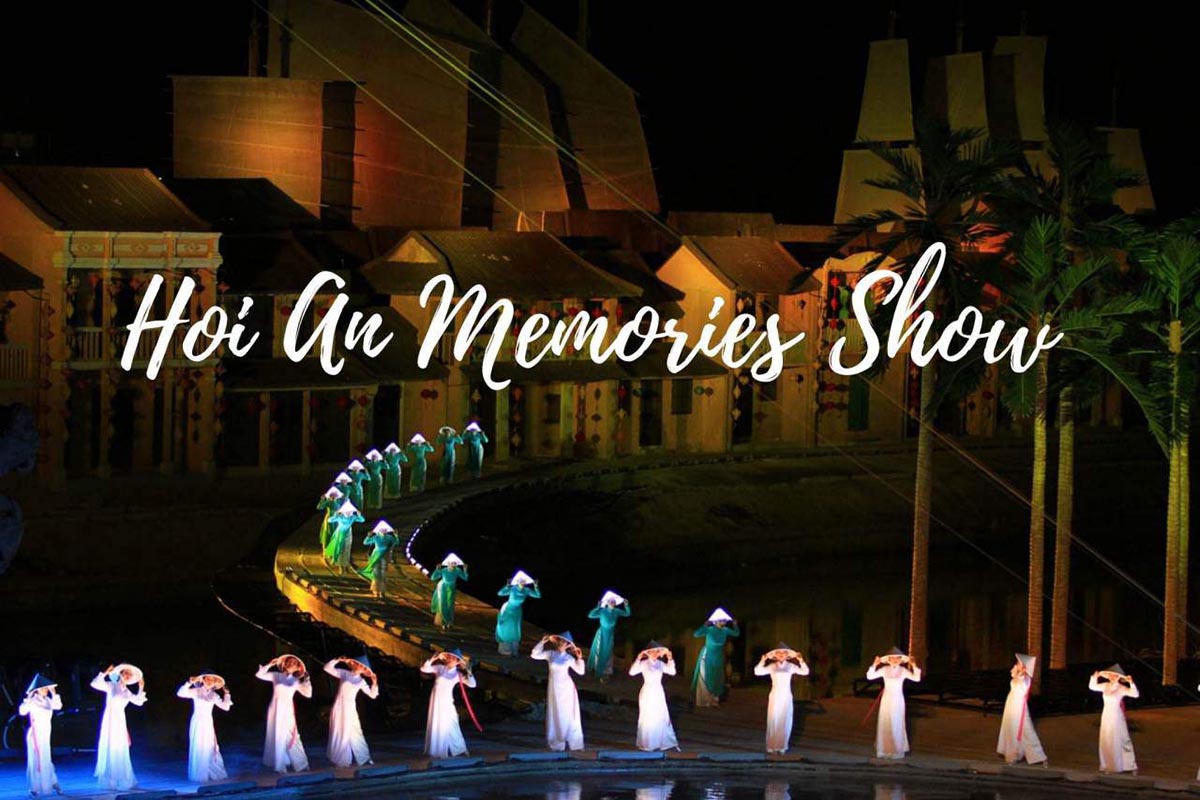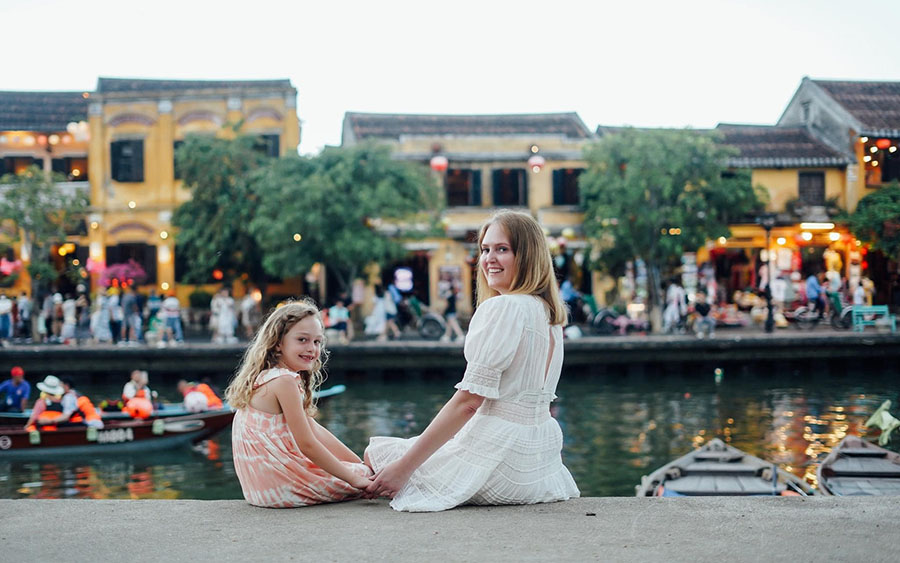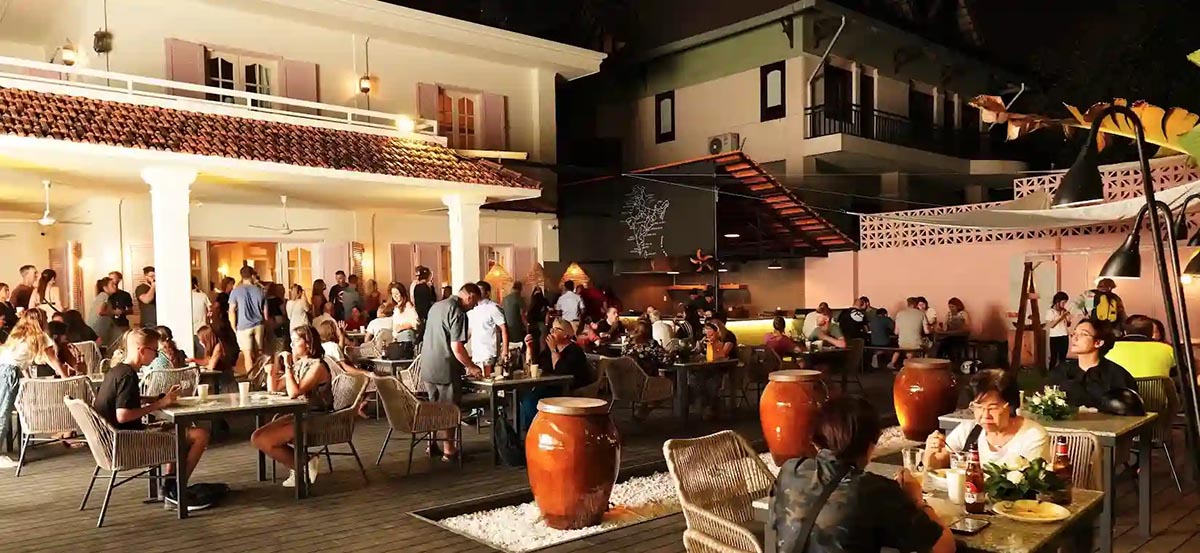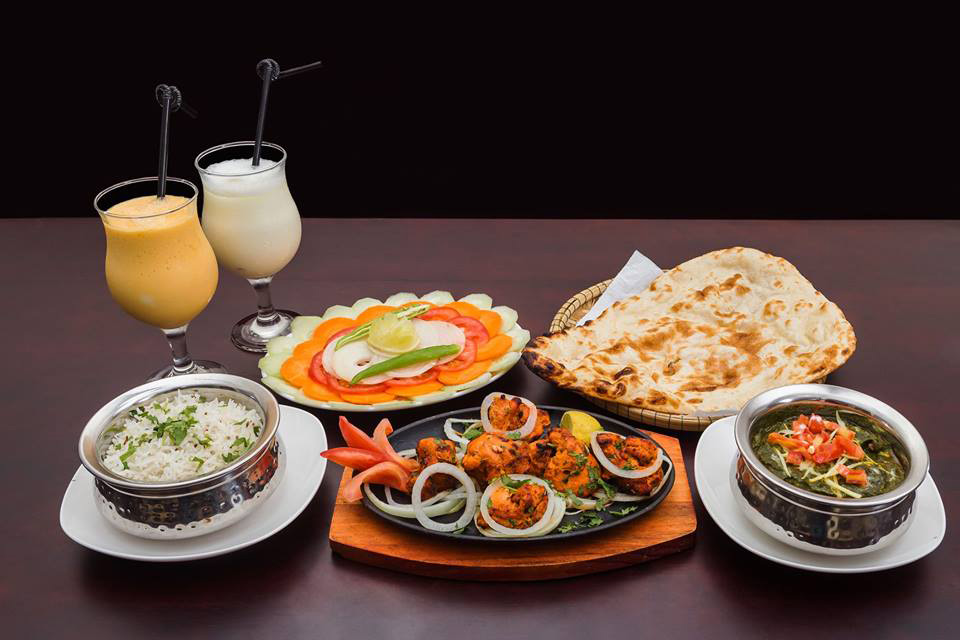Overview
The Hue Imperial City is located in Hue, Vietnam, on the northern bank of the Perfume River. It borders Tran Hung Dao Street to the south, Le Duan Street to the west, Tang Bat Ho Street to the north, and Phan Dang Luu Street to the east.
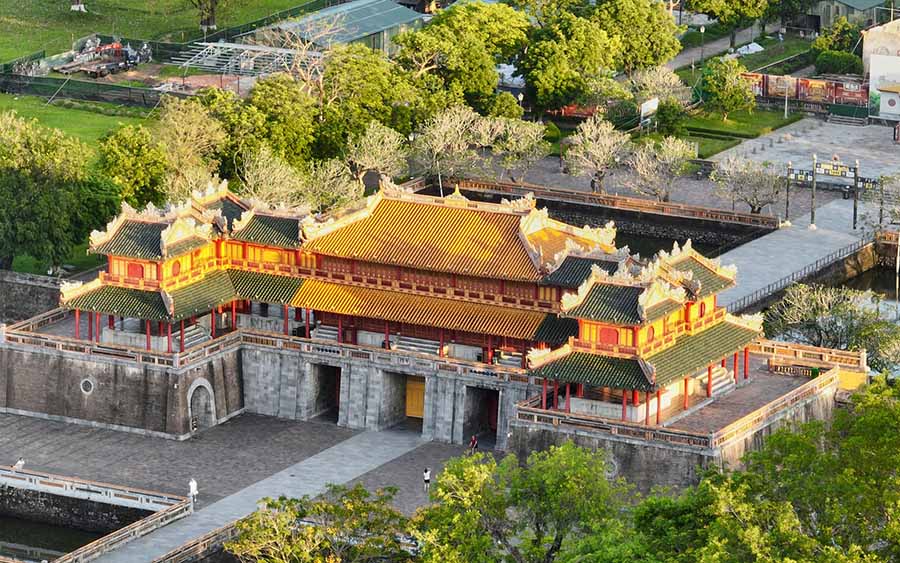
Hue Imperial City seen from afar
The entrance fee to the Hue Imperial Citadel is uniform for both foreign tourists and Vietnamese citizens, detailed as follows:
-
Adults: 200,000 VND (~8.70 USD)
-
Children (aged 7 to 12): 40,000 VND (~1.74 USD)
Tourists can opt for the assistance of a Hue Imperial City guide at an extra charge of 150,000 VND (~6.52 USD) per guide.
The opening hours of Hue Imperial City are subject to seasonal changes:
-
Summer: 6:30 AM - 5:30 PM
-
Winter: 7:00 AM - 5:00 PM
The history of Hue Imperial City
Hue Imperial City in Vietnam is a large fortress constructed during the reign of Emperor Gia Long in 1805. The dynasty mobilized around 30,000 people to work on river and canal embankments. By 1818, the workforce had increased to 80,000, focusing on bricklaying on the eastern, western, southern, and northern sides.
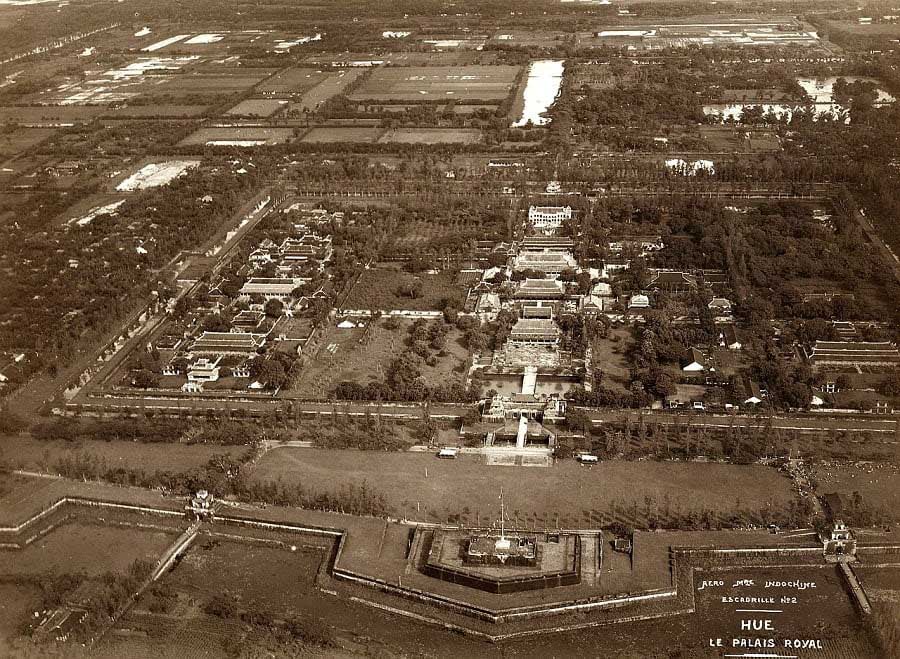
Hue Imperial City was built under the reign of Emperor Gia Long
In 1831-1832, Emperor Minh Mang commanded the building of extra defensive walls equipped with gun emplacements on the outer perimeter of the citadel. These walls were used to protect the citadel and repel any potential invaders.
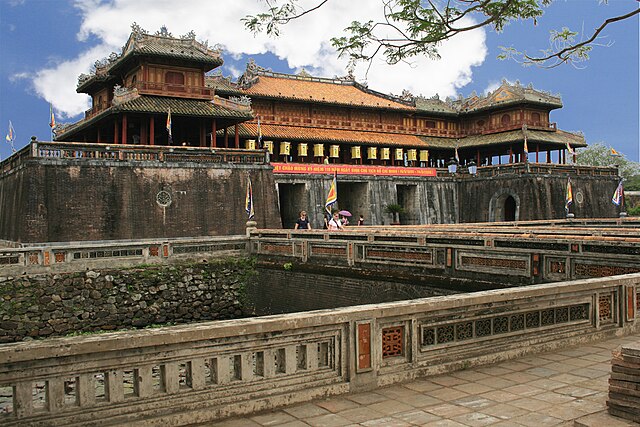
UNESCO recognized Hue Citadel City as a world heritage site in 1993
Hue Citadel is not only an ancient architecture, but it also remains a cultural and political center of Vietnam. This city served as the capital of Vietnam until 1945 when the country was divided into North and South Vietnam. In 1993, the Complex of Hue Monuments was recognized as a cultural heritage site, giving its globally significant beauty.
Some highlight architectures in Hue Citadel City
Ngo Mon Gate
Ngo Mon Gate is the main entrance to the Hue Imperial City. Upon arrival, visitors can admire the magnificent and vibrant palace painting.
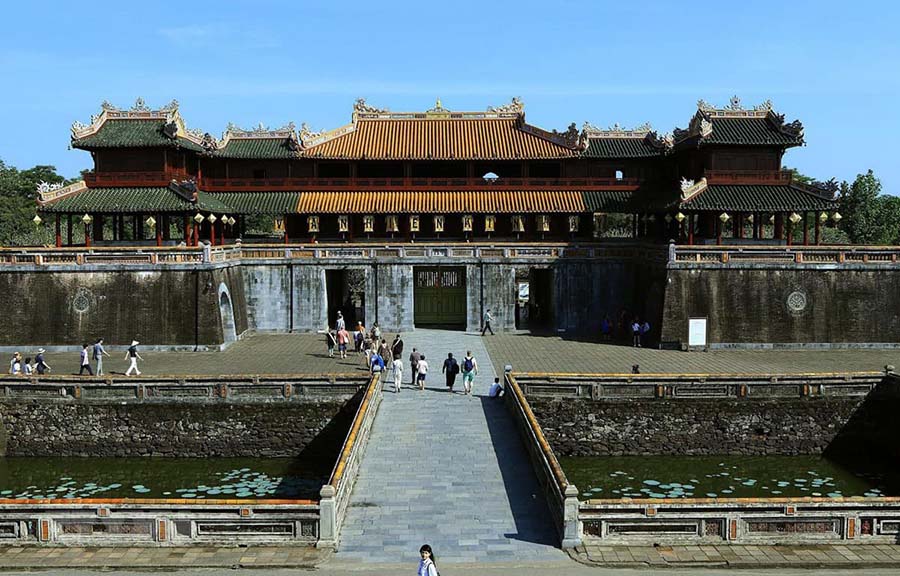
Ngo Mon Gate
Ngo Mon Gate is constructed facing the South, formerly known as the Noon direction. It features five distinct gates, with the King using the central gate, the two adjacent gates reserved for court officials, scholars, and military officers, and the outermost gate for soldiers. However, this gate is only used on important occasions or special ceremonial rituals.
Hoang Thanh
Hoang Thanh was once the residence of emperors and the imperial family, serving as the administrative center of the dynasty. It was also a place for ancestor worship and the commemoration of deceased kings of the Nguyen dynasty.
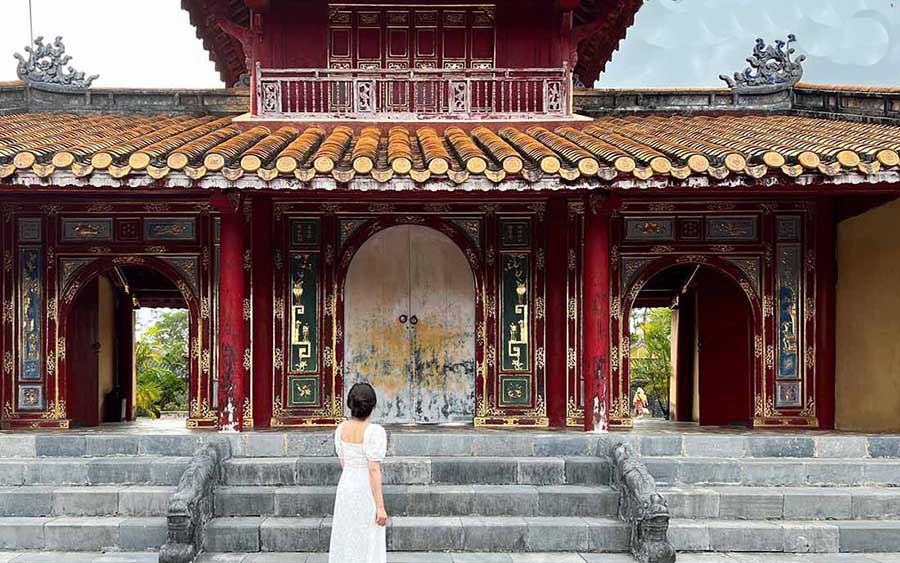
The Royal Family used the Imperial Citadel as their residence
Construction of the Hoang Thanh began in 1804 under Emperor Gia Long and was completed in 1833 under Emperor Minh Mang. The citadel has four gates, with the Ngo Mon Gate as the main entrance. Inside the citadel, there are numerous impressive architectural structures, including Thai Hoa Palace, Dien Tho Palace, Hien Lam Pavilion, etc.
Forbidden Purple City
The Forbidden Purple City is located in the center of Hue Imperial City. It was built in 1803 and received its name in 1821 during the reign of Emperor Minh Mang. The palace is designed in a rectangular shape, with the Great Forbidden Gate serving as the front entrance.
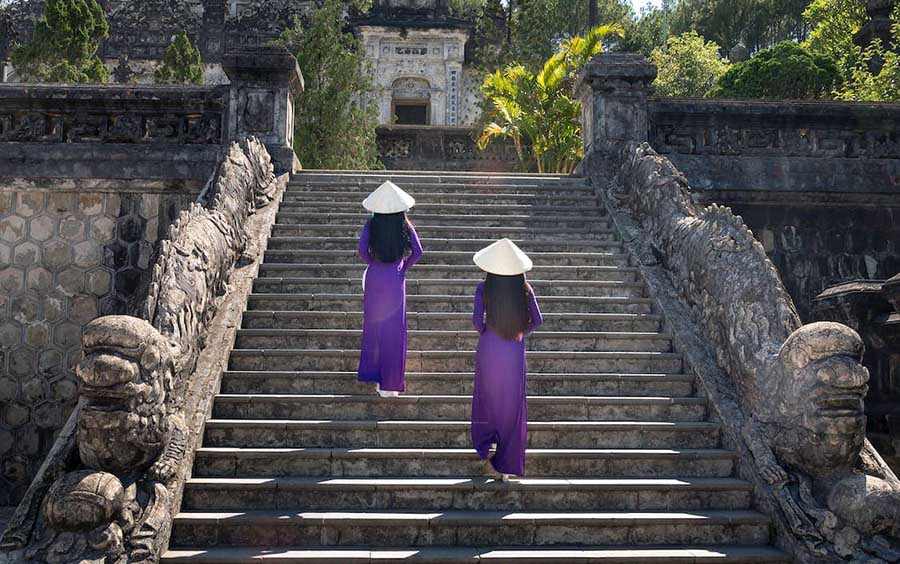
The Forbidden Purple City
How to get to Hue Imperial Citadel
There are several ways to get there, depending on your budget and preferences:
-
By foot: If you're staying in the city center of Hue, the Imperial Citadel is only a short walk away. You can cross the Phu Xuan Bridge and follow the signs to the citadel's main entrance, the Ngo Mon Gate. The walk should take about 15 minutes.
-
By bicycle: Renting a bicycle or motorbike is a great way to get around Hue and see the sights at your own pace. You can find rental shops all over the city. The ride to the Imperial Citadel from the city center should take about 5 minutes.
-
By taxi: Taxis are readily available in Hue and are a convenient way to get to the Imperial Citadel. A taxi ride from the city center should cost around 50.000-70.000 VND (2-3 USD).
-
By cyclos: Cyclos are traditional Vietnamese pedicabs that are a fun and unique way to get around. A cyclo ride to the Imperial Citadel from the city center should cost around 100.000-150.000 VND (4-6 USD).
-
By boat: If you're staying on the south bank of the Perfume River, you can take a boat across the river to the Imperial Citadel. The boat ride should take 10 minutes and cost around 20.000-30.000 VND (1-1.5 USD).
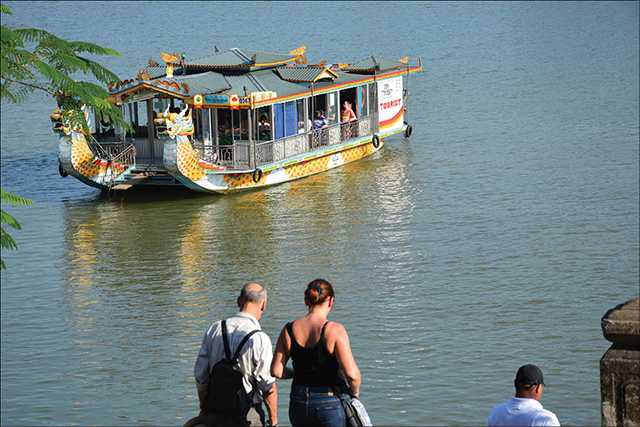
Tourists enjoy cruises on the Perfume River
Tips and reminders
-
Dong Ba Market is a great choice for trying specialties in vibrant and bustling local markets.
-
This significant cultural heritage site deserves respect, so you should dress modestly and avoid revealing clothing.
-
Since the tour of Hue Imperial City requires a lot of walking, comfortable clothes and shoes will provide ease of movement and flexibility.
-
Bring sunscreen and a hat, especially if you're visiting during the dry season.
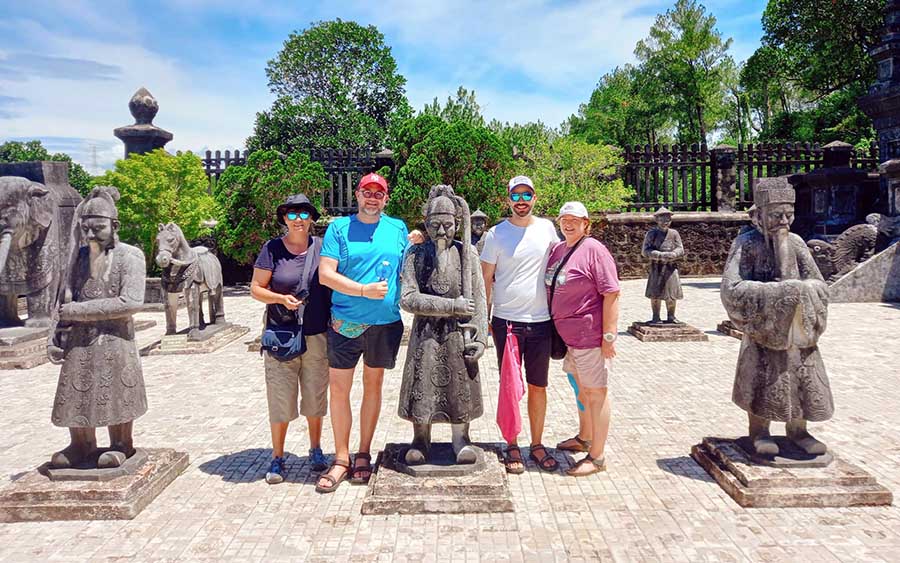
Tourists in Hue Imperial City
For more in-depth insights, read our Hue travel guide!
Hue Imperial City is a must-visit destination for anyone interested in the history and culture of Vietnam. With this basic guide, you'll have all the necessary information to appreciate the wonders of the Imperial Citadel fully. If you need further assistance, feel free to contact New Asia Tours. We would be delighted to guide your opportunity to explore this historical landmark in amazing Vietnam tours!



